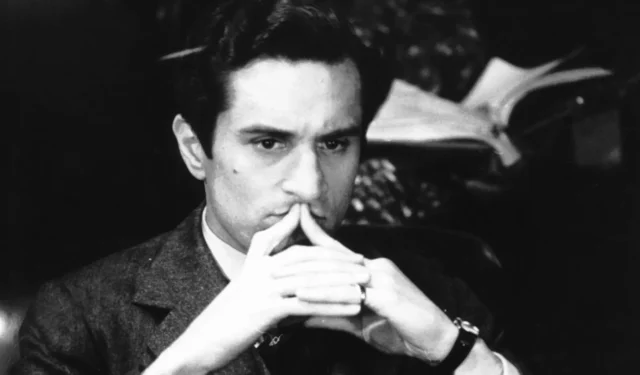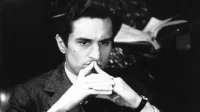Examining the Influence of Producers in Hollywood: From Seth Rogen’s “The Studio” to Classic Cinema
In Apple TV+’s latest series, The Studio, Seth Rogen steps into the role of Matt Remick, a newly appointed studio executive at the fictional Continental Pictures. The series employs dynamic camerawork and sharp dialogue that references various celebrities, providing viewers with an intriguing glimpse into the complexities of the film industry amidst the rise of streaming platforms. Based on early episodes, it appears that Matt struggles significantly with the intricacies of filmmaking, embodying a comedic take on the challenges faced by contemporary studio heads.
The Tradition of Self-Reflexivity in Hollywood
Throughout its history, Hollywood has consistently engaged in self-reflection, utilizing its art and business as material for compelling narratives. This meta-exploration of above-the-line talent stands in a long-standing tradition, although there remains a noticeable absence of stories about the unsung heroes of film production, such as gaffers, best boys, and sound designers.
A Historical Lens: The Evolution of the Studio Boss Character
Looking back at cinematic history, we can trace the first instances of self-aware storytelling in film to Thomas Edison’s collaboration in 1896 with illustrator J. Stuart Blackton to create Blackton, the Evening World Cartoonist. This brief vignette depicted Blackton sketching Edison, marking one of the earliest explorations of film’s behind-the-scenes life.
Despite Edison’s contributions, the studio executive has typically operated as a secondary figure within the “inside-Hollywood” genre. These narratives often prioritize the rise and fall of stars and directors, relegating producers to the background as mere check-writers. Classic films like Sullivan’s Travels (1941), Sunset Blvd. (1950), and Singin’ in the Rain (1952) provide a biting commentary on the ineptitude often attributed to producers, contrasting their decisions against the artistry of visionary directors.
From Fan Magazines to Behind-the-Scenes Tours
Initially, fan magazines and gossip columns served as gateways into the film industry’s inner workings. However, the films themselves soon offered audiences a crash course on production realities. Universal Pictures founder Carl Laemmle opened Universal City to the public in 1915, coinciding with the release of A Day at Universal City, a comedic film showcasing the intricate processes behind filmmaking.
By the 1920s, moviegoers had become increasingly familiar with the creation of films. In Show People (1928), Marion Davies adeptly parodied Hollywood culture, hinting at the self-awareness required of film audiences as they navigated jokes and cameos. With her connections to powerful producer William Randolph Hearst, Davies epitomized the complex interplay of personal relationships within the industry.
The Producer Archetype in Film History
Mark Sandrich’s The Talk of Hollywood (1929) features a producer faced with the transition to “talkies,”highlighting the comedic struggles typical of the industry. Meanwhile, George Cukor’s What Price Hollywood? (1932) marked a shift in portraying producers, particularly through the character of Bennett’s studio chief, bringing a nuanced perspective to the film’s examination of star-making machinery.
The 1940s saw major novels like F. Scott Fitzgerald’s The Last Tycoon and Budd Schulberg’s What Makes Sammy Run place producers at the forefront of Hollywood narratives. Characters like Monroe Stahr and Sammy Glick embodied the industry’s moral ambiguities, leaving an indelible mark on the public perception of producers in Hollywood.
Hollywood’s Evolution: The Emergence of the Antihero
In the post-war era, a shift in filmmaking emerged, contrasting traditional perceptions of glamour with a more cynical portrayal of the industry’s realities. Films such as Sunset Blvd. and A Star Is Born explored this transition through complex character arcs, illustrating the darker undercurrents of Hollywood culture.
This evolving narrative continued into the 1960s and beyond, where Hollywood’s cynicism reached new heights. Titles like The Player (1992) and Get Shorty (1995) further showcased a ruthless landscape where ambition and betrayal were commonplace. The archetype of the studio boss took on a brutal persona, transforming into figures willing to go to extreme lengths for commercial success.
Modern Reflections: *The Kid Stays in the Picture*
The documentary The Kid Stays in the Picture (2002) encapsulates the legacy of traditional Hollywood producers through Robert Evans’ life story. As the narrator recounts his tumultuous career, the film highlights the intersection of personal ambition and industry dynamics, providing a fascinating look at the legacy that shaped modern cinema.
From early portrayals of studio bosses to contemporary interpretations, the film industry’s complex relationship with its producers continues to evolve. As viewers enjoy series like The Studio, they gain insight not only into the business of cinema but also into the intricate human stories that lie behind the silver screen.


